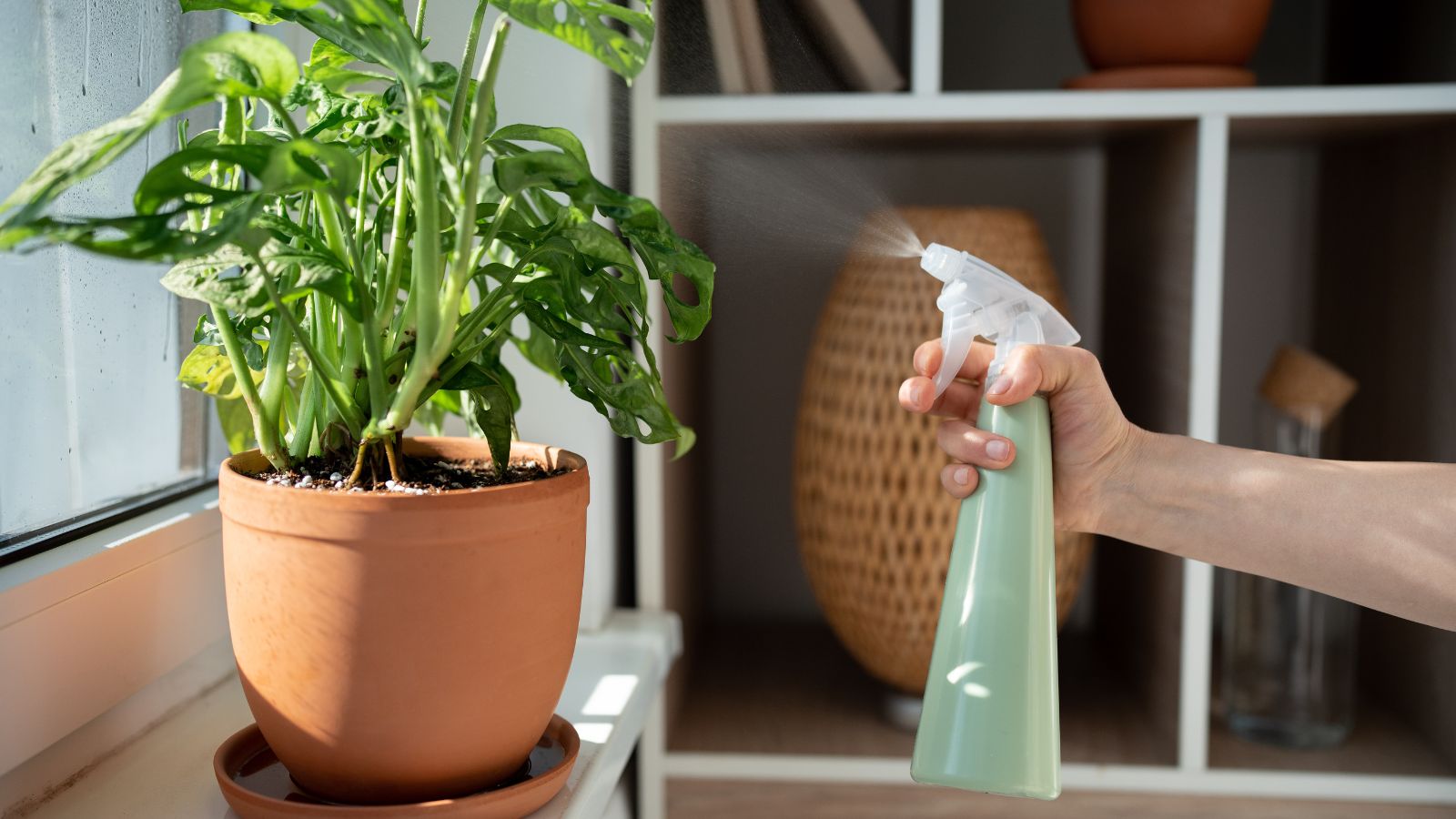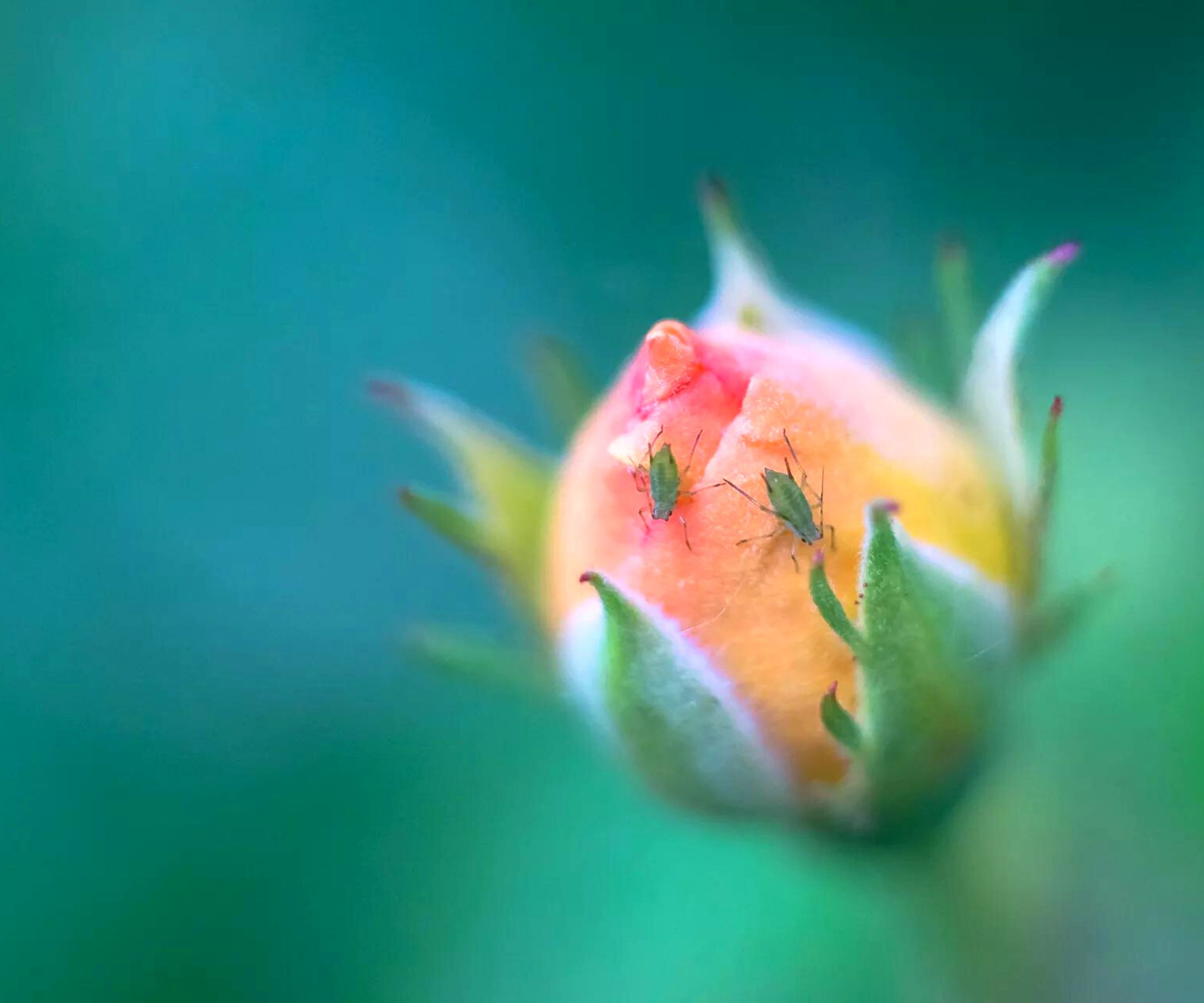
If you have an avid green thumb and love to fill your home with houseplants, then you will know the pain of discovering that aphids have moved in, too.
While we could turn to chemical solutions, there are some great DIY bug sprays that can help eradicate these pesky pests before they spread around your collection. And they use items you likely already have in your home.
Here, pest control experts and plant pros share their favorite recipes to make DIY aphid sprays, and explain how these green solutions work to get rid of aphids on houseplants.
How to create a DIY aphid spray
Aphids reproduce quickly. This combined with how tiny they are means you can develop quite an infestation before you're even aware of it.
If they are found indoors, it is likely because they have accidentally roamed inside through small cracks or gaps around windows and doors, or your indoor plants have an infestation of aphids. Luckily, aphids are soft-bodied and fairly easy to kill and deter.

1. Neem oil spray
One of the most popular natural ways to tackle aphids and other common houseplant pests is to use neem oil on plants. Neem oil is a naturally occurring pesticide found in the seeds of the Neem tree, making it a perfectly safe, chemical-free option for indoor plants.
To make a neem oil bug spray to get rid of aphids, combine two teaspoons of neem oil, one teaspoon of mild liquid soap, and one quart of water, instructs Tony O’Neill, gardening expert at Simplify Gardening. 'Neem oil disrupts the life cycle of aphids, preventing them from feeding and reproducing,' he explains.
'Use every seven to 10 days until aphids are under control.'
2. Alcohol and water spray
Another common way to combat aphids is to create a spray with rubbing alcohol. The high alcohol content of these sprays dries out the aphid's soft bodies, eradicating pests that can destroy plants.
To make an alcohol spray, mix one part rubbing alcohol and three parts water together in a spray bottle. Then, spray directly on aphids around once a week until the infestation is under control. Be cautious with delicate plants, however, as alcohol can sometimes cause damage by drying out leaves, especially if the plant is in direct sunlight.
If in doubt, use more delicate neem oil instead.
3. Garlic and water spray
Garlic is well known to be one of the best pest-repellent plants, so it makes sense to harness its powers for our houseplants. While we probably don't want to be growing garlic indoors, we can use its scent to deter these pesky pests before they set up a home.
The most common way to make this spray is to blend two cloves of garlic with one quart of water, strain the mixture, and add a few drops of liquid soap. Alternatively, Samuil Iliev, a permaculture and landscape designer recommends: 'Put a crushed garlic clove in a glass of hot water. After the water has cooled, strain the liquid and add a few drops of dish soap.' Pour into a spray bottle and apply directly to the affected areas.vUse every seven to ten days as needed.
4. Soap and water spray
It might be unassuming, but dish soap is a fantastic pest control tool. It makes the surface of your plants difficult to stick to, and can suffocate small bugs such as aphids, explains Tony O'Neill, gardening expert. He suggests combining one to two teaspoons of mild liquid soap and one-quarter of water.
'Mix the soap and water in a spray bottle. Spray the solution directly on aphids. The soap works by breaking down the aphids' protective outer coating, causing them to dehydrate and die,' he explains. 'Apply every four to seven days until aphids are controlled.'
5. Essential oil spray
If you aren't too keen on making your home smell like rubbing alcohol or garlic, there is good news. There are several nice-smelling scents garden pests hate that are effective against aphids while also making your home smell nice.
The secret is to use potent, pure essential oils. For example, mix four to five drops of rosemary, clove, cedar, orange, or peppermint oil (or create your own blend of each) and a cup of water in a spray bottle and apply liberally from leaf to root. We recommend investing in this PURA essential oil kit, from Amazon.
Essential oils are naturally repulsive to aphids, so whatever bugs the mixture doesn't kill off will be in a hurry to leave. Not only are essential oils completely safe, but they'll also pull double duty as a pleasantly fragrant insect repellent.
Always dilute your oil mixtures, as excessive oil left on leaves can burn your plant use every four to five days, and once the population is reduced, apply the spray every two to three weeks to prevent reinfestation.
How to use DIY aphid spray
When using natural remedies to deal with houseplant pests such as aphids, you need to work on prevention as well as a cure to prevent them from hopping from one plant to another.
'I would recommend quarantining affected plants in an area where there's no risk of aphids traveling to surrounding houseplants, and then really hosing down areas of the plant where there are visible aphids with this spray,' advises Brett Bennett, director of operations, PURCOR Pest Solutions. 'Repeat as often as necessary until you no longer see signs of activity.'
'Regularly check your indoor plants for signs of aphids, especially on the undersides of leaves and new growth, and apply an essential oil spray to deter their return,' he adds.
It's also worth noting that since aphids are almost exclusively attracted to new plant growth, another good way to get rid of aphids indoors is simply to trim back any impacted new growth and dispose of it along with the accompanying aphids. Physically removing heavily infested leaves reduces the population quickly.
FAQs
How do you identify aphids?
Aphids are fairly easy to identify. They are small, soft-bodied insects that feed on the sap of plants, causing damage by sucking out plant fluids. They can cause leaves to yellow, curl, or drop, and they often leave behind a sticky residue called honeydew, which can lead to the growth of sooty mold.
The best way to treat aphids is to apply sprays and preventative measures as soon as you see signs of them. Regularly monitor your plants for signs of aphids, such as white cast skins, honeydew, and ant activity, and apply these sprays as needed to keep your indoor plants healthy and aphid-free.







